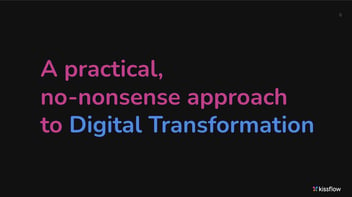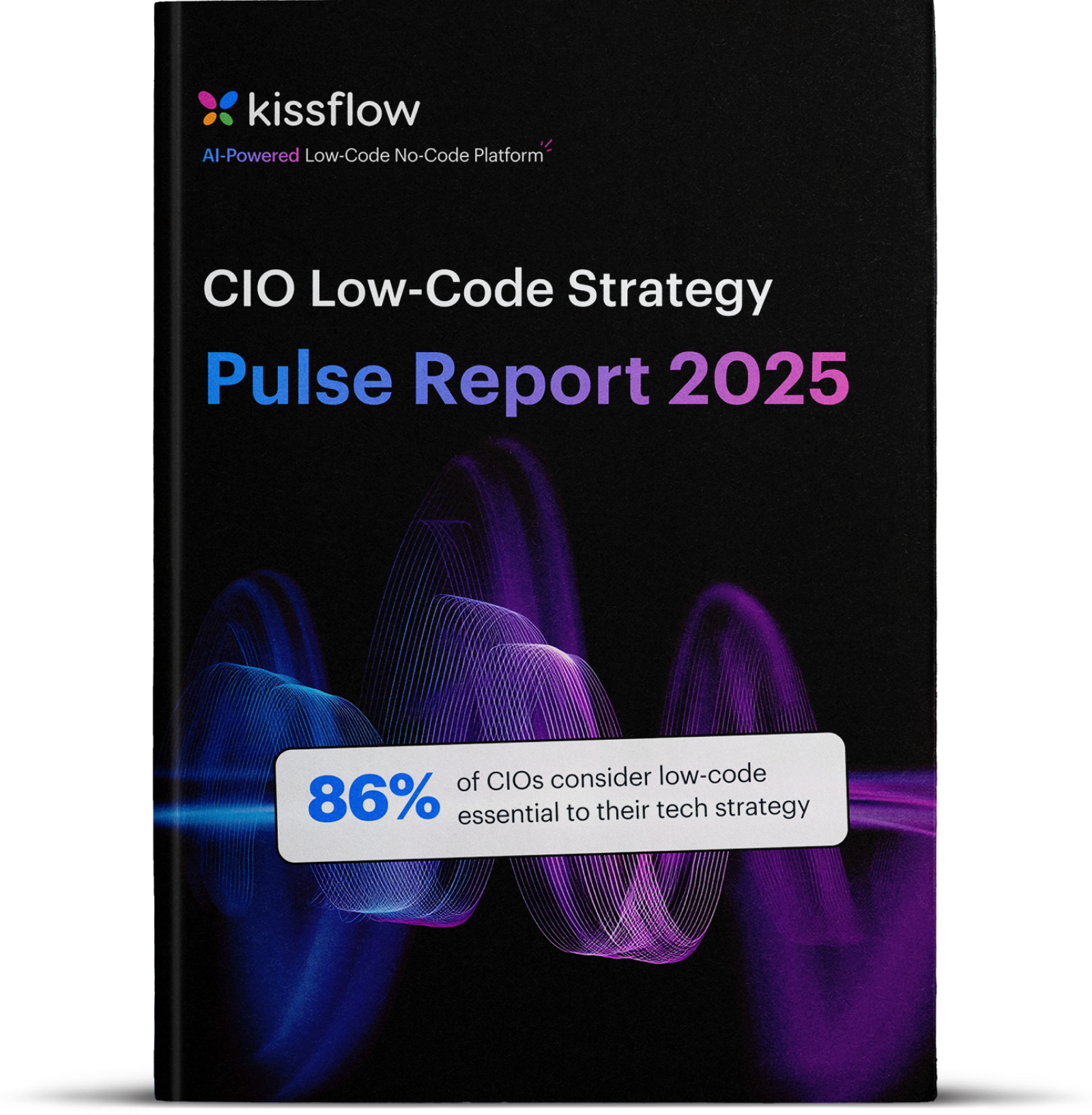
Improve Customer Experience with Automated Insurance Workflows
The insurance industry is rapidly adopting digital solutions to meet changing customer expectations. Today's Policyholders expect quick responses, transparent processes, and hassle-free interactions with insurers. Traditional manual workflows often struggle to meet these demands, leading to delays, errors, and inefficiencies that negatively impact customer experience.
To address these challenges, insurers turn to insurance workflow automation, streamlining operations by minimizing manual intervention and accelerating critical processes. Automated insurance workflows reduce processing times, enhance accuracy, and ensure compliance with industry regulations. From claims management automation and policy renewals to customer onboarding and support, automation enables insurers to deliver faster, more reliable, and more customer-friendly services.
By integrating workflow automation for insurance into their operations, providers improve efficiency, enhance customer satisfaction, and build long-term trust, which are critical factors in staying competitive and driving insurance digital transformation.
The importance of customer experience in the insurance industry
Customer experience (CX) is one of the biggest factors that set insurance providers apart in a competitive market. Policyholders expect fast responses, clear communication, and smooth interactions with their insurers. Delays in automated insurance claims processing, unclear policies, or slow support can lead to frustration, negative reviews, and lost business. On the other hand, a positive experience encourages customer loyalty, repeat business, and referrals.
Insurance workflow automation plays a key role in improving CX by making insurance processes faster, more accurate, and easier for customers to navigate. Automated insurance workflows speed up claims approvals and policy updates, ensuring customers get the assistance they need without long wait times. Standardized processes reduce errors and help insurers stay compliant, building trust and reliability. Automated notifications and self-service options keep customers informed and engaged, improving retention and reducing follow-ups.
How workflow automation transforms insurance processes
Insurance processes involve multiple steps, from document verification to claims approvals. When handled manually, these tasks are time-consuming and inconsistent. Insurance operations automation simplifies these processes, making them faster, more accurate, and reliable.
Key benefits of workflow automation in insurance:
- Reduces repetitive tasks: Automation handles routine tasks like policy issuance, document verification, and claims approvals, freeing employees to focus on more complex and strategic work.
- Improves transparency: Automated tracking systems provide real-time updates on claims status, policy changes, and customer requests, keeping everyone informed and reducing uncertainty.
- Ensures regulatory compliance: Automation enforces predefined rules and industry regulations, reducing the risk of non-compliance and human errors.
By optimizing these processes, workflow automation improves efficiency, enhances accuracy, and delivers a more consistent customer experience, helping insurers meet policyholder expectations with minimal delays.
Top benefits of workflow automation for insurance customer experience
Insurance providers must deliver a smooth and efficient experience to maintain customer trust and satisfaction. Workflow automation helps insurers speed up claims processing, simplify customer onboarding, and improve support services, ensuring a hassle-free experience for policyholders.
1. Faster claims processing
Filing and processing a claim can be time-consuming when done manually. Customers often face delays due to paperwork, verification steps, and approval procedures.
Automation eliminates these bottlenecks by:
- Extracting and verifying data from claim documents, reducing manual processing time.
- Assigning claims to the right adjusters based on predefined rules, ensuring faster resolution.
- Auto-generating approvals or flagging complex claims for further review, preventing unnecessary delays.
With automation, insurers can process claims in hours instead of days, leading to a better customer experience and quicker payouts.
2. Efficient customer onboarding
First impressions matter; a smooth onboarding process sets the tone for a long-term customer relationship. Manual onboarding often involves excessive paperwork, delays in document verification, and multiple back-and-forth interactions.
Automation streamlines onboarding by:
- Digitizing document collection and verification, reducing the need for manual handling.
- Auto-filling forms with existing data, minimizing errors and saving time.
- Providing real-time updates on application status, keeping customers informed, and reducing frustration.
By automating these steps, insurers offer a smooth onboarding experience, making it easier for new customers to get started.
3. Improved customer support
Customers expect quick and efficient support when they have questions about policies, claims, or payments. Traditional support systems rely on manual ticketing, long response times, and inefficient routing of inquiries.
Automation enhances customer service by:
- Automatically routing inquiries to the appropriate department, reducing wait times.
- Using AI-driven chatbots to provide instant responses to common customer queries.
- Enabling self-service options for policy changes, claim tracking, and other routine requests.
With automated customer support, insurers can resolve issues faster, improve response times, and enhance customer satisfaction, ensuring policyholders receive the assistance they need without delays.
Key use cases of workflow automation in insurance
Workflow automation transforms the insurance industry by reducing manual work, improving efficiency, and delivering better customer experiences. From claims processing to policy renewals and customer support, automation helps insurers handle tasks faster and more accurately. Below are some of the most impactful use cases where automation makes a difference.
1. Automated claims management
Claims processing is a complex process that involves multiple departments, document verification, and risk assessments.
Automation speeds up this process by:
- Using AI-powered data extraction to validate claim details instantly.
- Detecting potential fraud by analyzing claim patterns and identifying anomalies.
- Processing instant payouts for approved claims, reducing wait times for policyholders.
2. Policy renewal and updates
Customers expect a smooth renewal process without unnecessary delays.
Automation simplifies policy renewals by:
- Sending automated reminders before policy expiration to encourage timely renewals.
- Enabling digital signatures for quick approvals and document authentication.
- Adjusting policies automatically based on customer preferences or eligibility changes.
3. Customer feedback collection and analysis
Understanding customer satisfaction is essential for improving insurance services.
Automated workflows help collect and analyze feedback efficiently by:
- Automatically sending surveys after settling a claim or renewing a policy.
- Analyzing responses to identify common concerns and areas for improvement.
- Providing actionable insights to customer service teams for enhanced support.
4. Policyholder engagement automation
Proactive engagement strengthens customer relationships and improves retention.
Automation enhances engagement through:
- Personalized communication via email and SMS, reminding customers of policy renewals, discounts, and important updates.
- AI-powered chatbots that provide real-time assistance and answer common policy-related questions.
- Automated notifications to keep policyholders informed about claims, payments, and policy modifications.
5. Automated insurance workflows
Many insurance processes involve repetitive administrative tasks that slow down operations. Automation optimizes these workflows by:
- Eliminating redundant manual processes, such as data entry and document verification.
- Standardizing workflows to ensure consistency and accuracy across departments.
- Improving collaboration by automatically assigning tasks to the right teams at the right time.
6. Insurance document automation
Handling policy documents, contracts, and claim forms manually is time-consuming and prone to errors. Automated document workflows help by:
- Instantly generating digital forms for policies, claims, and agreements.
- Auto-indexing and storing insurance documents securely for easy retrieval.
- Allowing easy document sharing between teams and customers while ensuring data security.
7. Insurance underwriting automation
Underwriting involves evaluating risks and determining premium amounts based on various factors.
Automation simplifies underwriting by:
- Automating risk assessments using AI and predictive analytics.
- Ensuring faster approval processes with predefined rule-based decision-making.
- Reducing manual review times, leading to quicker policy issuance.
8. Insurance customer service automation
Providing timely support is crucial for maintaining customer satisfaction.
Automated customer service solutions include:
- AI-driven chatbots that handle common queries and assist with policy-related requests.
- Automated ticketing systems that route customer issues to the appropriate department.
- Self-service portals where customers can track claims, update policies, and access important documents.
9. Insurance policy administration automation
Managing policies throughout their lifecycle involves several steps, from issuance to modifications and renewals.
Automation streamlines policy administration by:
- Automating policy updates based on customer changes or regulatory requirements.
- Generating automated reports to track policy performance and compliance.
- Reducing manual data entry to minimize errors and administrative overhead.
How workflow automation supports long-term customer loyalty
Trust, reliability, and smooth experiences build customer loyalty in the insurance industry. Policyholders stay with insurers when they process claims efficiently, manage policies smoothly, and address concerns promptly. Workflow automation enables insurers to deliver this level of service consistently, strengthening relationships and increasing renewals and referrals.
1. Ensuring smooth experiences
Customers expect smooth and hassle-free interactions with their insurers, whether they file a claim, renew a policy, or seek assistance. Automation eliminates bottlenecks, reduces errors, and speeds up key processes, ensuring customers don’t face unnecessary delays. For example, an automated claims system can verify documents, assess risks, and approve payouts in a fraction of the time it takes with manual processing. Customers who experience quick and efficient service are likelier to stay loyal to their insurer.
2. Providing proactive communication
One of the policyholders' biggest sources of frustration is uncertainty, waiting for claim approvals, renewal reminders, or policy updates without clear communication. Automation keeps customers informed at every stage of their journey.
- Automated notifications send real-time updates on claims and policy statuses.
- Reminders for renewals and payments help customers avoid lapses in coverage.
- Personalized messages via email or SMS create a sense of engagement and trust.
When customers know what to expect and feel reassured through proactive communication, they develop a stronger connection with their insurer.
3. Allowing human interaction where it matters
Automation doesn’t replace the human touch; it enhances it. By handling routine tasks such as data entry, document verification, and basic customer inquiries, automation frees up insurance staff to focus on more meaningful interactions.
- Customer service representatives can spend more time addressing complex concerns than managing paperwork.
- Claims adjusters can assist policyholders in challenging situations, providing empathy and reassurance.
- Agents can offer personalized policy recommendations instead of processing routine updates.
This balance of automation and human interaction creates a more personalized experience, making customers feel valued and respected, a key driver of long-term loyalty.
Why choose Kissflow for workflow automation in insurance?
Insurance digital transformation starts with eliminating delays, reducing errors, and optimizing operations. Kissflow enables insurers to do exactly that—automating key processes like claims management automation, policy administration, renewals, and customer support to deliver faster, more accurate services.
Kissflow’s low-code/no-code platform makes it easy to build automated insurance workflows with customizable logic, built-in compliance, and seamless integrations. It supports both business and IT teams, allowing insurers to scale efficiently without IT bottlenecks.
With Kissflow, insurance providers accelerate operations, improve customer satisfaction, and stay competitive in a fast-changing industry.
Related Articles











